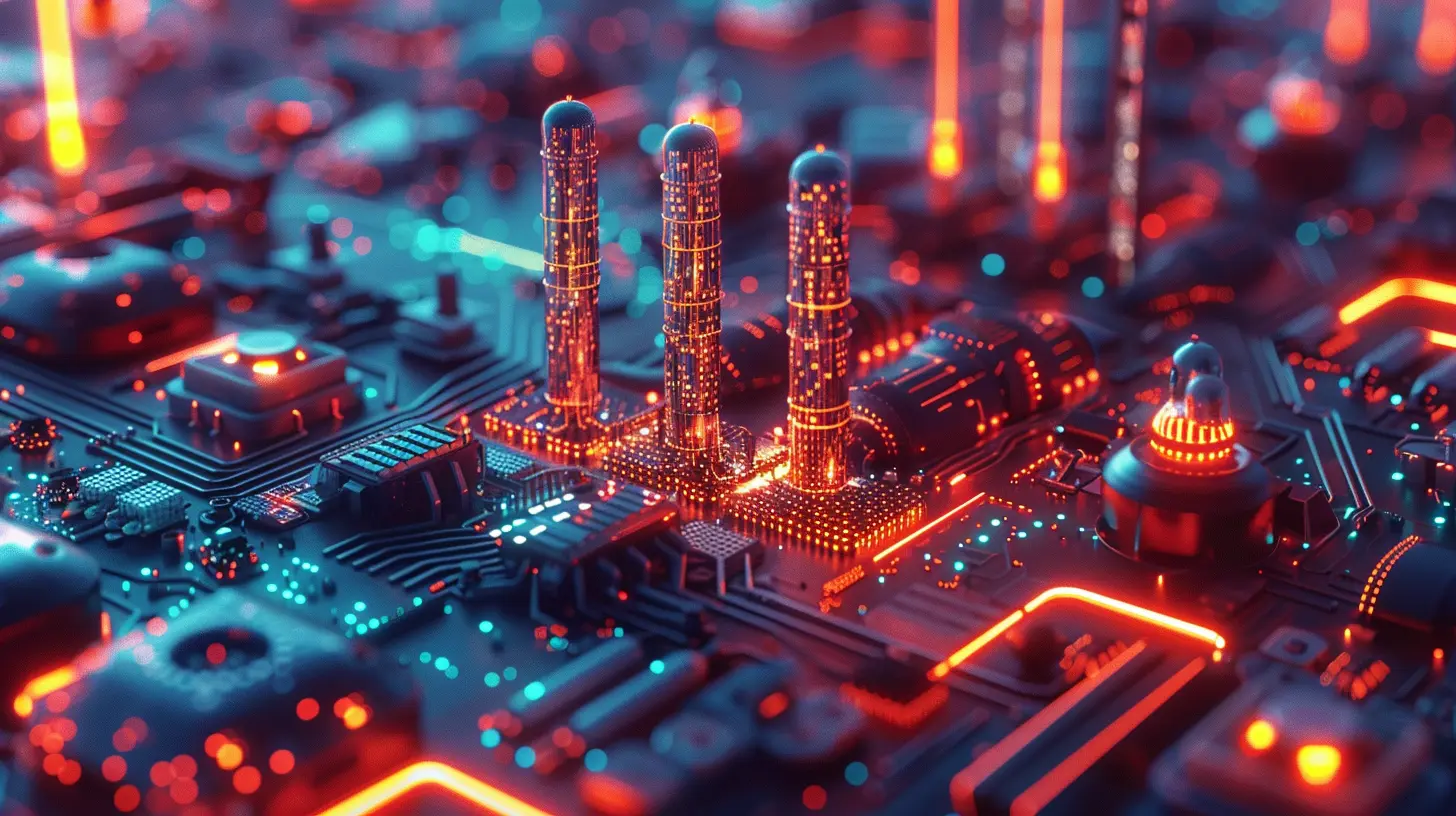How Machine Learning is Improving Energy Efficiency and Sustainability
19 November 2025
We live in a world that's facing increasing environmental challenges. With climate change, resource depletion, and energy consumption at an all-time high, the need to find sustainable solutions is more urgent than ever. One of the surprising yet powerful tools emerging in this battle for sustainability is machine learning (ML). You probably hear a lot about machine learning in the context of self-driving cars or targeted ads, but did you know it's also transforming how we use energy?
In this article, we'll dive into how machine learning is making energy consumption more efficient and driving sustainability efforts. We'll explore real-world applications, the future potential, and how this innovative technology is helping to save the planet.

What is Machine Learning?
Before we get into the nitty-gritty of energy efficiency, let's quickly cover what machine learning actually is. At its core, machine learning is a subset of artificial intelligence (AI) that allows computers to learn from data without being explicitly programmed. It's like teaching a dog new tricks but without having to explain every little detail — the system learns through experience.In the context of energy efficiency, machine learning can analyze mountains of data—think energy consumption patterns, weather forecasts, or even the habits of people in a building—to make smarter decisions on how energy is used. The result? Less waste and more efficiency, without sacrificing comfort or performance.

The Growing Importance of Energy Efficiency and Sustainability
We all know that energy is essential for modern life. From powering our homes to fueling businesses, our world runs on energy. But there's a catch. Traditional energy sources, like fossil fuels, are not only finite but also harmful to the environment. They release carbon emissions that contribute to climate change, and their extraction can cause catastrophic environmental damage.That's where the push for energy efficiency and sustainability comes into play. Energy efficiency is all about using less energy to do the same job, while sustainability focuses on meeting our present needs without compromising future generations. Both are crucial if we want to reduce our carbon footprint and mitigate the worst effects of climate change.
Now, this is where machine learning steps in to save the day.

How Machine Learning is Improving Energy Efficiency
1. Optimizing Energy Consumption in Smart Grids
Ever heard of a "smart grid"? It's essentially a modern electricity network that uses digital technology to monitor and manage the production and distribution of electricity. But here’s the thing—smart grids can only be as smart as the data they process.Machine learning algorithms can analyze real-time data from these grids to predict energy demand more accurately. For instance, during a hot summer day, energy consumption spikes due to air conditioning use. By using machine learning, energy providers can predict these spikes in demand and adjust their supply accordingly. This minimizes energy waste and helps prevent blackouts.
Moreover, machine learning models can detect anomalies, such as a sudden drop or spike in energy consumption, which could indicate faulty equipment or inefficiencies. This allows for quicker interventions, ensuring that energy is not wasted.
2. Enhancing Energy Efficiency in Buildings
Buildings account for a significant portion of global energy consumption. Whether we're talking about homes, offices, or industrial buildings, they all use energy—heating, cooling, lighting, you name it. But not all of that energy is used efficiently.Machine learning can turn buildings into smart, energy-efficient structures. It can analyze data from various sensors—such as temperature, humidity, and occupancy sensors—to optimize heating, ventilation, and air conditioning (HVAC) systems. Instead of manually setting the thermostat (and possibly forgetting to turn it down when you leave), machine learning algorithms can adjust settings in real-time based on your habits, the time of day, or even the weather.
One example is Google's use of DeepMind, a machine learning AI, to optimize energy use in their data centers. The system reduced the energy needed for cooling by 40%, simply by analyzing data and making smarter decisions.
3. Predictive Maintenance for Energy Systems
Think of machine learning as a crystal ball for energy systems. Through predictive maintenance, ML can analyze data from machinery and equipment to predict when something is likely to fail. This is important because faulty or inefficient equipment tends to waste energy.Take wind turbines as an example. These massive structures generate renewable energy but are costly to repair when they break down. By using machine learning to predict when a turbine might fail, maintenance can be performed before a costly and energy-wasting breakdown occurs. This not only saves energy but also reduces downtime, making renewable energy generation more reliable.
4. Optimizing Renewable Energy Sources
The future of energy is renewable, but renewable energy sources like wind and solar have a key challenge: they are unpredictable. The sun doesn't always shine, and the wind doesn't always blow. So, how do you ensure a steady, reliable energy supply?Enter machine learning. By analyzing weather data, machine learning algorithms can predict how much energy will be generated by solar panels or wind turbines. This allows for better integration of renewable energy into the grid, reducing the need for backup fossil fuel power and making renewable energy more reliable.
For example, ML models can predict a cloudy day or a windless period and adjust energy storage systems to compensate for the drop in renewable energy production. This means less reliance on non-renewable sources and a more sustainable energy system overall.

Machine Learning and Sustainability: The Bigger Picture
1. Reducing Carbon Footprint
One of the biggest ways machine learning contributes to sustainability is by helping reduce our carbon footprint. By optimizing energy use, predicting failures, and improving the reliability of renewable energy sources, ML helps cut down on the unnecessary burning of fossil fuels.For example, transportation is a massive contributor to global carbon emissions, but ML is helping optimize routes and reduce fuel consumption for everything from delivery trucks to personal vehicles. This not only saves money but also reduces emissions, making transportation more sustainable.
2. Enabling Circular Economies
A circular economy is all about reducing waste and reusing resources. Machine learning can help make this possible by optimizing supply chains and resource use. For instance, ML can predict when a product might be returned or recycled, allowing companies to better manage their resources and reduce waste.Moreover, ML models can analyze data from waste management systems to identify patterns and suggest improvements, making recycling systems more efficient and reducing the overall environmental impact.
3. Promoting Sustainable Agriculture
Energy efficiency doesn't just apply to buildings and grids—it also plays a crucial role in agriculture. Machine learning is being used to optimize irrigation systems, reducing the amount of water and energy needed to grow crops. By analyzing weather data, soil conditions, and crop health, ML can ensure that only the necessary amount of water is used, reducing waste and saving energy in the process.This is especially important as agriculture accounts for a significant portion of global water and energy use. By making farming practices more efficient, machine learning helps promote sustainability in this critical sector.
The Future of Machine Learning in Energy Efficiency and Sustainability
While machine learning is already making a big impact, we're only scratching the surface of its potential in energy efficiency and sustainability. As the technology continues to evolve, we can expect even more innovative solutions to emerge.For example, the integration of machine learning with the Internet of Things (IoT) is likely to revolutionize energy management. Imagine a world where all your devices—your fridge, your thermostat, your lights—are connected to a smart system that learns your habits and automatically adjusts to minimize energy use. That future is closer than you think.
Additionally, as renewable energy becomes more prevalent, machine learning will play a crucial role in ensuring that these sources are used as efficiently as possible. From optimizing energy storage to predicting supply and demand, ML will be at the heart of the renewable energy revolution.
Challenges and Ethical Considerations
Of course, no technology is without its challenges. While machine learning holds immense potential for energy efficiency and sustainability, there are also ethical considerations to keep in mind.For one, machine learning relies on large amounts of data, raising concerns about privacy and data security. Who owns the data generated by smart grids and smart buildings? How can we ensure that this data is used responsibly?
Furthermore, the development and deployment of machine learning systems require energy and resources, which could offset some of the benefits. It's essential to consider the entire lifecycle of these technologies to ensure that they're truly contributing to a more sustainable future.
Conclusion: A Smarter, Greener Future
Machine learning is more than just a buzzword—it's a powerful tool that's already making a difference in how we consume and produce energy. From optimizing smart grids to enhancing energy efficiency in buildings and promoting renewable energy, machine learning is leading the charge toward a more sustainable future.As we continue to face environmental challenges, the integration of machine learning into energy systems will be crucial in reducing our carbon footprint, minimizing waste, and creating a more sustainable world for future generations.
So, the next time you think about machine learning, don't just picture robots or self-driving cars—think about how it's quietly working behind the scenes to make your world a little greener.
all images in this post were generated using AI tools
Category:
Machine LearningAuthor:

Ugo Coleman

